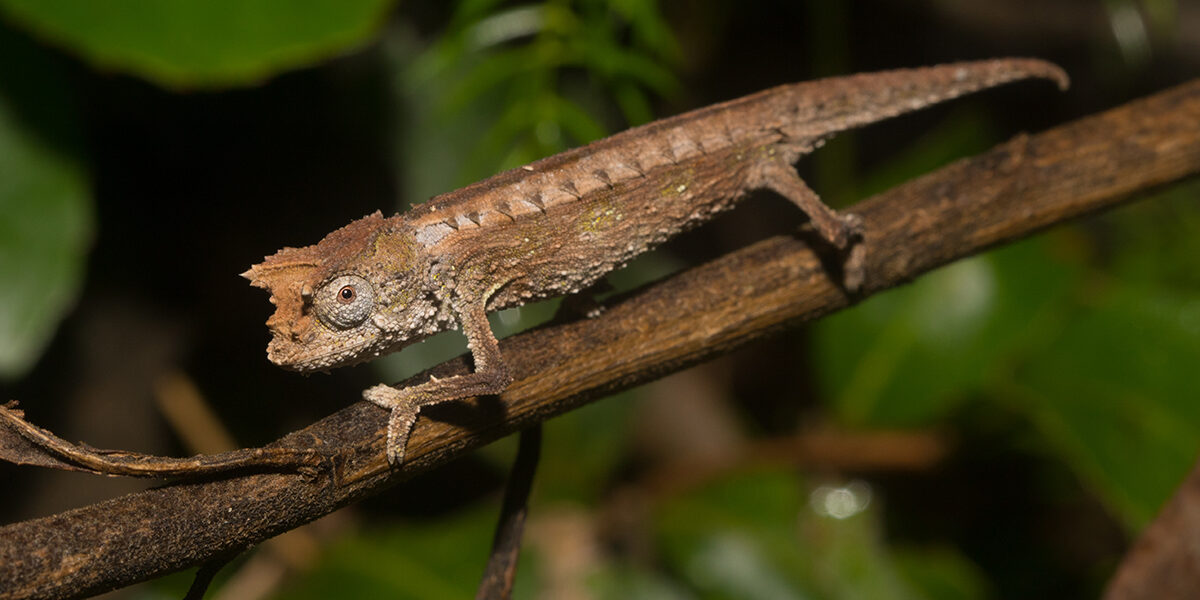Keeping and breeding Brookesia thieli
The breeding of leaf chameleons outside Madagascar has been successful since the 1990s. Nevertheless, there are only a few keepers who can prove breeding success in the long term or who have been dealing with individual leaf chameleon species for years. Michael Nash from the USA has now published a detailed husbandry and breeding report on Brookesia thieli.
He keeps his animals in the terrariums we commonly use with completely ventilated lids and either vent in the front bottom or the entire front as ventilation area, living plants, and bioactive substrate. T5 HO and halogen spotlights are used for lighting. The best breeding results were achieved by keeping two or three males together with four females. The author was able to make exciting observations on the defensive behaviour of males, where the animals not only open their mouths but actually protrude their mouth cavities. For food, the author uses Zelus renardii, a type of predatory beetle from North America, in addition to the usual small food such as micro crickets, bean beetles, and various flies. This is sold as a beneficial insect and is used, for example, in the Mediterranean region to control certain pests in olive plantations. In addition, Brookesia thieli particularly liked winged termites offered by the author, which might also be an interesting food animal that has hardly been used by chameleon keepers so far.
To trigger mating behaviour, dry and rainy seasons are imitated. The dry season is characterised above all by a massive night-time drop in temperature to 13°C and less irrigation. During the imitated rainy season, temperatures rise to around 26°C during the day and 19-21°C at night, and there is also increased irrigation during the day. Females lay 3-5 eggs after an average gestation of 30-60 days, with up to three clutches per female per season. The best incubation success was achieved at 21-23°C during the day and 19-20°C at night. The author notes that hatching rates increased after supplementing the diet with preformed vitamin A every two months.
Overall, this is a very readable husbandry report with many interesting details. Hopefully that the data will support keepers in the breeding and long-term conservation of this exciting leaf chameleon species.
Keeping and breeding Brookesia thieli
Michael Nash
Responsible Herpetoculture Journal 5, 2022
keine DOI vorhanden


